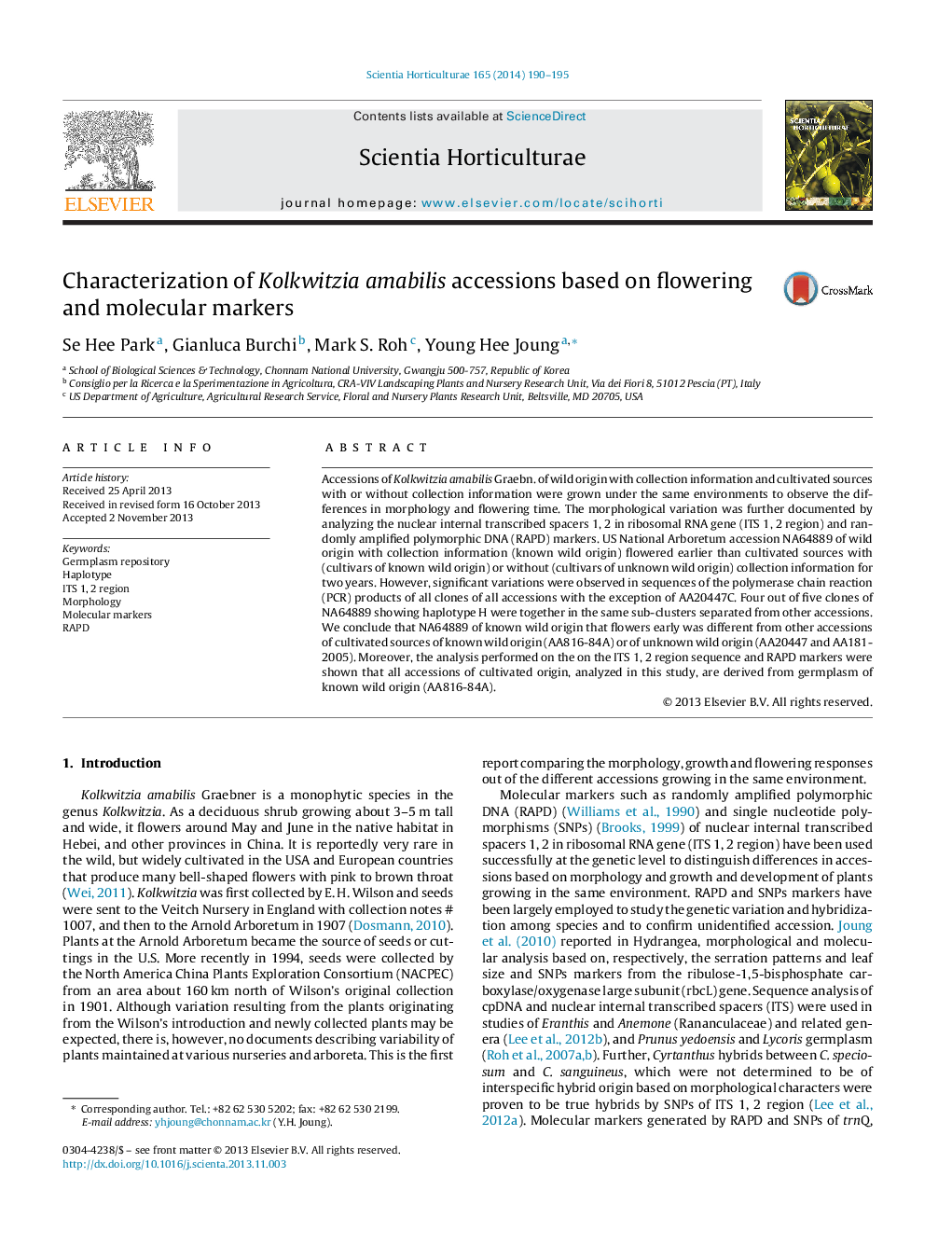| Article ID | Journal | Published Year | Pages | File Type |
|---|---|---|---|---|
| 6407421 | Scientia Horticulturae | 2014 | 6 Pages |
â¢Kolkwitzia amabilis (NA64889) of known wild origin flowered the earliest.â¢NA64889 clustered distantly from accessions of cultivated source of known wild origin, AA816-84A.â¢The internal transcribed spacers 1, 2 (ITS 1, 2) in ribosomal RNA gene was sequenced.â¢NA 64889 was differentiated by sequence analysis of ITS 1, 2 region and RAPD markers.â¢Accessions of cultivated origin are derived from known wild origin (AA816-84A).
Accessions of Kolkwitzia amabilis Graebn. of wild origin with collection information and cultivated sources with or without collection information were grown under the same environments to observe the differences in morphology and flowering time. The morphological variation was further documented by analyzing the nuclear internal transcribed spacers 1, 2 in ribosomal RNA gene (ITS 1, 2 region) and randomly amplified polymorphic DNA (RAPD) markers. US National Arboretum accession NA64889 of wild origin with collection information (known wild origin) flowered earlier than cultivated sources with (cultivars of known wild origin) or without (cultivars of unknown wild origin) collection information for two years. However, significant variations were observed in sequences of the polymerase chain reaction (PCR) products of all clones of all accessions with the exception of AA20447C. Four out of five clones of NA64889 showing haplotype H were together in the same sub-clusters separated from other accessions. We conclude that NA64889 of known wild origin that flowers early was different from other accessions of cultivated sources of known wild origin (AA816-84A) or of unknown wild origin (AA20447 and AA181-2005). Moreover, the analysis performed on the on the ITS 1, 2 region sequence and RAPD markers were shown that all accessions of cultivated origin, analyzed in this study, are derived from germplasm of known wild origin (AA816-84A).
